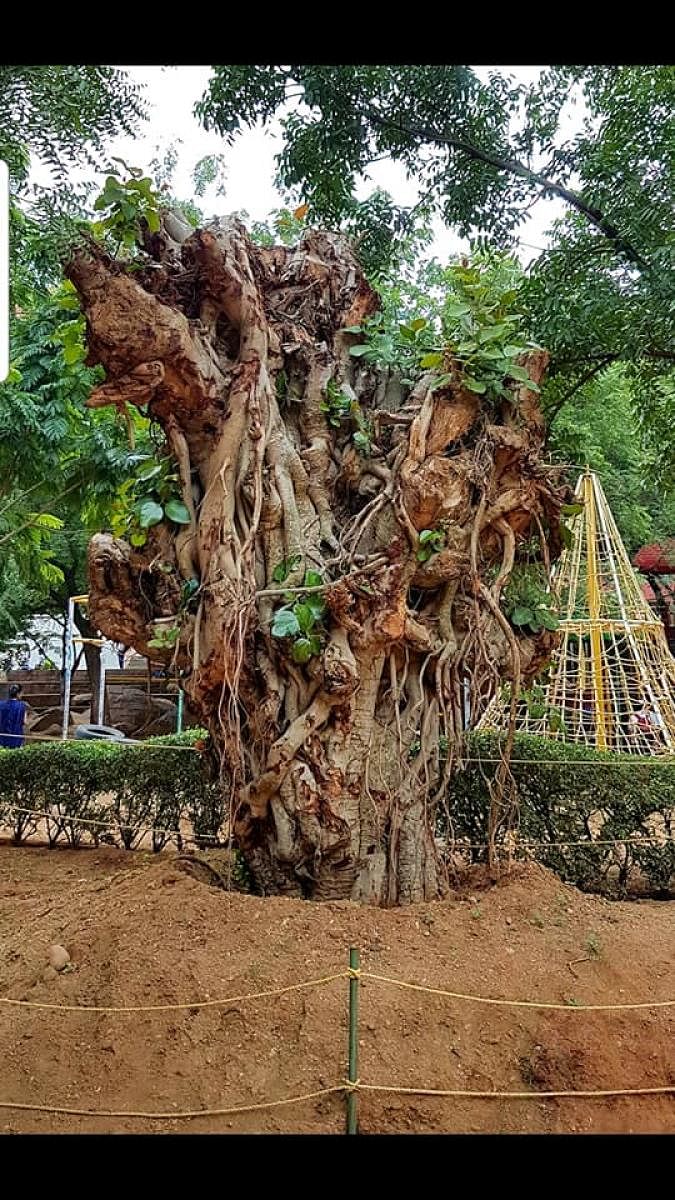Spared the axe, some trees find a new home


When a 90-year-old banyan tree was saved in Arambol, Goa, the community rejoiced.
Volunteers had been sweating it out on a hot day to save the tree that was nearly a century old. “The tree had been witness to various socio-cultural events for decades. The locals were heartbroken when it fell. As the area was sandy, there was no way we could take a crane to the location. We had to entirely depend on earthmovers and ropes to lift the tree. It took us four hours to accomplish the task,” said Uday Krishna, a volunteer from Vata foundation, which specialises in translocating trees.
Trees are usually translocated while laying and widening roads, due to construction work or during renovation of a structure.
Describing the process, Uday said, “We tied ropes to the branches and pulled the tree up using JCBs. The tree had fallen due to heavy rains, so time was a factor. Heavier branches were cut to help the tree find balance when it would be erected. A three to four feet deep hole was dug for the roots to sink in.”
Apart from transportation and challenges that each terrain may present, after re-rooting, the tree needs post-operative care. In the case of the banyan tree, Uday said locals and the community around the tree promised to provide it.
While translocation is considered during developmental projects, not all trees survive. And it can be expensive too. So, this can’t be a solution for the destruction of trees for various projects. In recent years, various organisations are engaged in tree translocation. Vata Foundation based in Hyderabad has been translocating trees for the past six years. They generally work on trees that have fallen, about to fall, or are marked for chopping, and re-plant in a safer location.
The process
The tree marked for translocation is sufficiently padded with gunny bags at the trunk, where the crane will take hold and lift the tree. The tree can be watered 24 hours prior to de-rooting to ease the process. Pruning and fertilising should be properly planned to ensure that the digging and replanting process is completed quickly. The trunk would also need to be tied with strong ropes to help it lie on the truck after lifting. The soil would have to be loosened with a JCB, leaving a clump of soil below the tree roots. This clump of soil is called a root ball.
The roots and the soil should also be covered with wet gunny bags as this would help keep the soil moist and the tree nourished before it is lifted on to the truck and placed in a sleeping position with the roots facing the engine. Sometimes, the roots of the tree are also treated with chemicals to help in the transportation process.
After the tree is secured with ropes, gunny bags covering the roots must be kept wet throughout the journey. The branches of the tree should be tied carefully, the vehicle should maintain a safe speed. A trench is dug in the new location of the tree, the soil can also be treated with anti-pest and anti-disease chemicals to aid the tree in its adjustment period.
Survival rate
The survival rate of translocated trees mostly depends on the species and the age of the trees. Younger trees transplant better and are easier to manage than older trees which take at least two years to establish. Translocating trees during extreme seasonal changes can impact the tree’s adjustment to the new location. Also, certain species survive better after transplantation. Peepal, Banyan, Indian Elm, Acacia Ferruginea and Fig trees have a better rate of survival when compared to species like neem.
With more people weighing the option of translocating trees, some companies provide services for a charge. “Charges start at around Rs 6,000, but we have also charged Rs 1.5 lakh for one order,” said Ramachandra Appari whose company is into tree translocation.
Last resort
Environmentalist C R Babu feels that development projects should be taken up in places not densely populated by trees. If not, the developer should alter the road design to save as many trees as possible.
Translocation should be the last option and they should be preferably done for less than 15-year-old trees, otherwise, trees will not have sufficient canopy. “Transplantation is not successful for tropical trees but may work for shallow-rooted trees, and preferably old trees shouldn’t be uprooted,” said C R Babu.